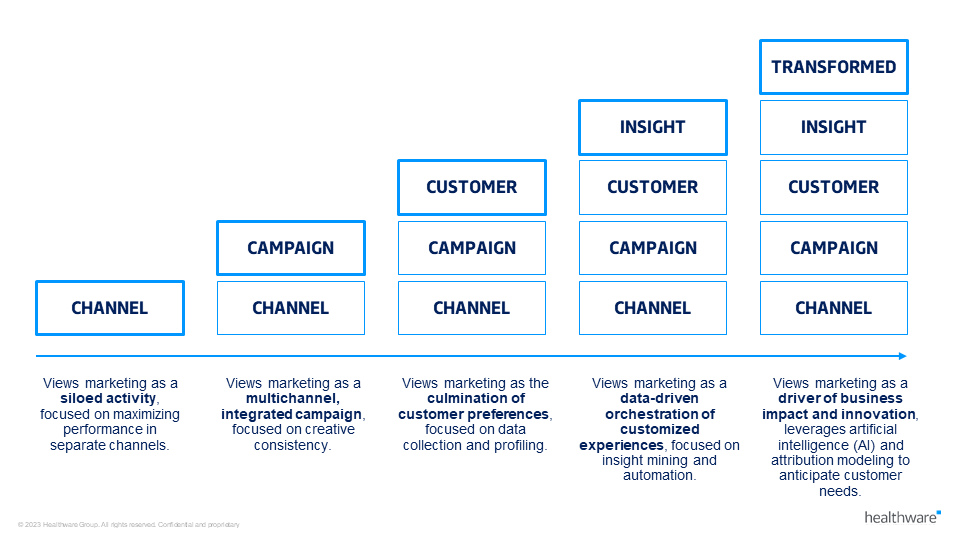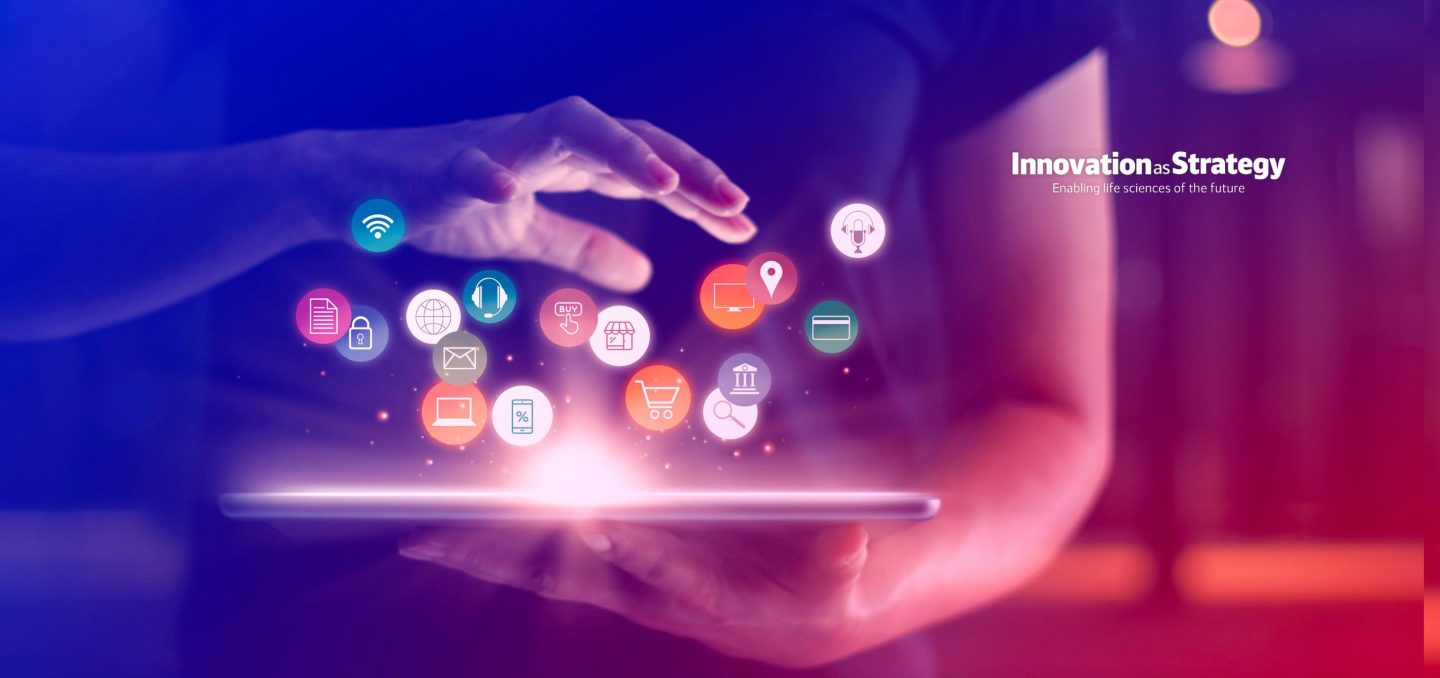Omnichannel. It seems to be the word of the moment in life sciences, especially in the pharmaceutical sector. While once just having ‘digital’ in your title meant you were one of the cool kids, I’m now seeing more roles with ‘omnichannel’ in the title, especially in commercial functions.
So, to ask the question many people don’t like to, what does it actually mean?
A cursory Google search will reveal all kinds of explanations, including how omnichannel is different from multichannel. But, in simple terms, omnichannel is about transforming customer engagement to ensure that a cohesive, and joined up, message is delivered across all personal and digital channels (including the field force) – not just hitting customers with more channels but connecting the dots across them to form a unified and effective story.
The result: a better customer experience and more impactful message delivery for your brand (which should equal higher sales, if your positioning is solid).
Assuming that sounds good, the next question from senior leaders is: what do we need to deliver this?
Most often, the answer to this question is ‘technology’ – CRM and all the systems that sit around it, enabling effective customer profiling, content management, next-best action, and so on. For sure, you cannot deliver omnichannel transformation without this technology. However, given that there are so many good technologies around, why have so few companies achieved omnichannel nirvana?
In my experience, the answer is that, while technology is a key enabler, to view achieving omnichannel maturity (Figure 1) as predominantly a technology project is a path to failure. And I still see too many companies charging down this route.

Figure 1: True omnichannel maturity requires both technology and fundamental shifts in the operating model to become more customer- rather than brand-centric.
What else is needed then?
Here are some key areas that deserve at least equal focus as technology, to deliver real success.
Vision and leadership buy-in
As mentioned above, the initial challenge is that there is still a lack of understanding of what omnichannel means. There are multiple interpretations of it, even where it’s understood.
Before embarking on any transformation, this needs to be aligned across all levels of leadership, from C-level executives to the leaders who will deliver this change. This vision needs to include not only clarity on the new operating model, but also how this model will be delivered (encompassing all the following points), what success looks like and how it meets the needs of all stakeholders internal and external (including investors / shareholders).
Critically, it also needs buy-in to embrace a mindset that is first and foremost customer-centric, rather than internally brand- or function-centric.
Changes in processes and internal alignment
Changing the customer engagement model also requires changes to the current processes and functional setup, as these are all geared around the ‘old’ model.
This encompasses numerous areas, for example:
- Brand planning, which needs to be coordinated across all customer-facing functions (commercial, medical, market access, corporate communications) to ensure a cohesive strategy.
- Creative / content production, which needs to adapt in to enable a more modular approach to telling the story piece by piece, allowing dissemination over time and different channels as part of a single, cohesive story.
- Compliance, which will need to operate more nimbly when approving customer-facing materials.
- Field force operations, which must tightly coordinate with central activities, whether within commercial, medical or market access.
With regards to brand planning, to achieve true omnichannel maturity this should actually be ‘customer planning’, starting with their needs and desires to think about how to best share brand information, rather than vice versa. This is a key component of the industry’s long-voiced promise to be more customer-centric.
At its core, true omnichannel transformation also therefore poses questions around the fundamental structure of companies. For example, should there even be separate medical and commercial functions when they are both tasked with providing customers with relevant information, albeit of different types?
That’s a much bigger topic for another article…
Comprehensive change management
Change management is one of the most overlooked aspects of any transformation, in my experience.
Think about all the effort spent on brand marketing where we are trying to change the behavior (prescribing) of physicians. It starts with extensive market research, which feeds into testing and retesting the positioning, then building out the experience architecture (what the barriers to change are and how we move customers through them), into the engagement experience (how we get the message across), and extensive measurement to track how we’re doing and what needs to change.
Now think about how much of that same effort we typically apply to internal teams when trying to change their behavior to operate in a more ‘omnichannel’ way. Why is it different?
Change management is another whole topic, but it’s so much more than communication. It encompasses every element listed here and, critically, requires securing the right input from internal stakeholders to understand their current beliefs and behaviors, plus securing their input and buy-in to the change being made.
My advice: engage early, understand their situation, and involve them in the solution. Don’t suddenly spring a new ‘solution’ on them that they have heard nothing about and had no input into.
Effective data management
Data, data everywhere, but not a drop of insight!
We live in a world where massive amounts of data are created every day, and data sits at the core of any effective omnichannel system. It enables a deeper understanding of every individual customer, to the level of n=1, which allows more personalized, effective approaches.
But only if the data is as complete and accurate as possible.
This requires an understanding of data accuracy at the point of entering the system, identification of gaps, the ability to integrate disparate data sources together (interoperability), and ongoing cleansing / maintenance to ensure it’s kept up to date. Without this, even a well-structured data system will quickly become redundant.
Also, make sure the system is set up so that those who know the customer best have the opportunity to challenge the data as part of the maintenance process. This is principally the field forces operating on the front line, because – shock and horror – sometimes they might know something that your data machine doesn’t!
Even before you bring in data scientists and smart AI applications, customer profiling needs to embrace both secondary data sources and first-hand human knowledge.
Fresh incentives
Omnichannel transformation can often feel like herding cats to those leading it. And how do you herd cats? Simple, you move their food!
Objectives and incentives are an often overlooked area in customer engagement transformation. At its core, a more customer-centric omnichannel approach seeks to improve the quality of each interaction, not just (or indeed at all), the frequency of interactions.
This needs to be reflected in the personal objectives and incentives for everyone involved in making it happen, from the senior global leaders right through to the local sales reps and MSLs. For example, trying to get sales reps to invest time in understanding how to deliver more modular content and integrate their activities with central marketing approaches, like email or webinars, is never going to work if they remain incentivized by the number of calls, they make every day.
Instead, it’s important to work back from the desired end model (and what success looks like in this) to define overarching KPIs and translate these into specific objectives for all internal stakeholders involved in driving the change, with their incentives linked to these.
In summary, achieving omnichannel maturity is about carefully considering all aspects of the organization that need to change – people, systems and processes. The above factors are key components of this, and I’m sure you can think of more.
Technology is an important part of achieving this maturity, within the ‘systems’ bucket. However, viewing omnichannel transformation as a predominantly ‘technology’ problem / opportunity / project won’t deliver success.
You could even say that delivering true omnichannel maturity requires ‘omnipotency’ – the power to influence and lead many others, across every function, on this journey. I look forward to working with more Global Heads of Omnipotency on transforming our industry!



